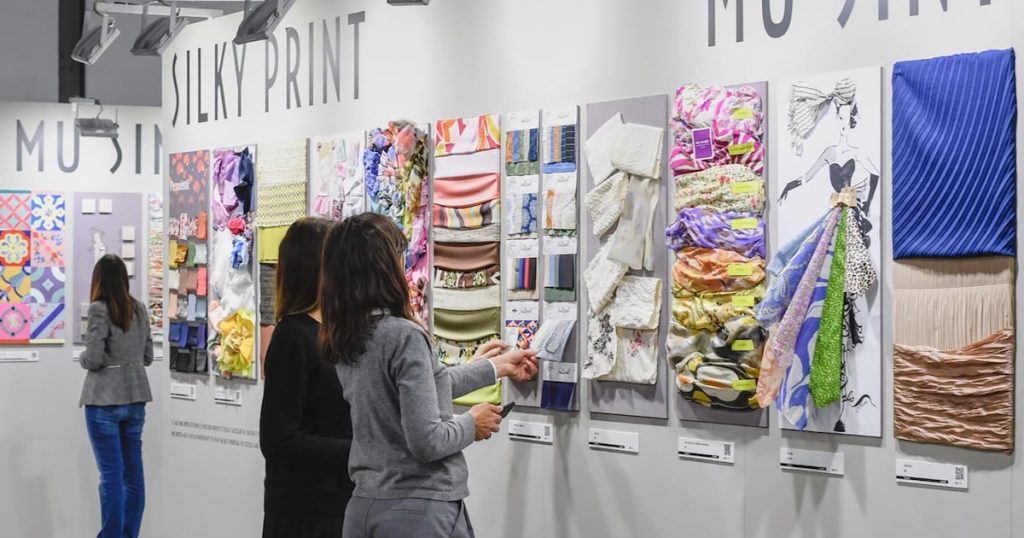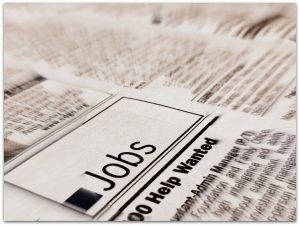The global trade landscape is undergoing a significant transformation, with major economies increasingly shifting their sourcing strategies in response to evolving, unpredictable political dynamics, rising manufacturing costs and a heightened focus on sustainability. According to BoF’s The State of Fashion 2025, produced in partnership with McKinsey & Co., brands seeking to mitigate risk are diversifying their supply chains and laying the groundwork for nearshoring to ensure more resilient and sustainable sourcing.
As this diversification of supply chains continues, trade fairs like Milano Unica, Italy’s bi-annual textile and accessories trade fair, provide key opportunities for brands and businesses to optimise in this area. Milano Unica provides a platform for industry leaders to explore innovative solutions, connect with suppliers, and engage in educational programming to inform attendees on these critical global shifts. Since its inception in 2005, the fair has grown significantly — combining five separate trade shows to hold over 700 exhibitors, including renowned brands such as Loro Piana and Zegna.
Critically, Milano Unica focuses on the full supply chain. The fair is not only a showcase of Italian craftsmanship and production skills, but also acts as a global hub that represents a diverse range of markets and attracts key partners, sponsors, and institutions — including the likes of the Italian Ministry of Foreign Affairs and International Cooperation (MAECI), ITA Italian Trade Agency (called ICE Agenzia in Italy), Milan Town Council, Confindustria Moda-Federazione Tessile e Moda. The UK Fashion & Textile Association (UKFT) is now a regular and committed exhibitor at Milano Unica, bringing together and representing the UK textile industry.
Their latest edition welcomed a record-number of overseas companies, which accounted for 40 percent of the total attendees, highlighting the appeal of the Made in Italy label. In total, approximately 4,800 international buyers representing around 2,500 companies visited Milano Unica’s stands, contributing to an overall attendance of about 6,500 companies.
Milano Unica continues to evolve with an emphasis on sustainability, the circular economy and technological innovation. This year, which marks the 40th edition of the event, there will be a section of the fair dedicated to sustainable materials and trends in the space. Special projects also highlight the intersection of art, fashion and technological advances, such as augmented reality (AR) and artificial intelligence (AI). At Milano Unica, dedicated areas showcase the next generation of designers, innovators, and industry leaders across the globe.
To provide a deeper understanding of Milano Unica’s role in these shifts, BoF sits down with Simone Canclini, president of Milano Unica, to discuss the fair’s unique positioning in an ever-evolving landscape of global textiles and fashion, as well as how the event is adapting to meet the challenges and opportunities of 2025 and beyond.

What are the main challenges and macro-changes facing the textile industry today?
The global textile industry is really undergoing a profound transformation, and this is largely being driven by global challenges and macro-changes that are redefining the way products are designed and then produced. The main drivers of change are related to sustainability, ecological transition, digitalisation, and technological innovation.
There are also wider forces at play that are important to mention, particularly macro geopolitical shifts. These shifts and disruptions are resulting in ongoing instability in supply chains — and forcing companies to rethink their business models and adopt more responsible practices. As part of those considerations, companies should also really leverage technology to remain competitive in a rapidly changing market.
That said, the significant and widespread increase in the presence of companies from all key geographical areas is a promising sign of the positive recovery forecasts for the second half of the year. For instance, this edition saw a 40 percent increase in French exhibitors, and France recorded the highest number of visiting companies, with 213 in attendance.
How has Milano Unica evolved in recent years to support the textile sector and wider fashion industry?
As president of this trade fair event, but also as an entrepreneur — I work for a textile company whose product is on display at Milano Unica — I think the fair represents, on an international level, a really accredited place for quality fabrics and accessories. We are driven by stylistic innovation — and are capable of responding to the needs of the entire sector, when it comes to sustainability and circularity.
Over the years there has been a differentiation in the market, and we really lean into excellence when it comes to materials and environmental concerns throughout the production processes. In Europe, strict regulations are looming and implementing technology has become really key to navigating the complex scenarios that these are restructuring.
What role does sustainability and innovation play at Milano Unica?
Sustainability, for many years now, has become a central and distinctive topic of Milano Unica, which is a natural reflection of the shifts in attitudes and priorities that we’ve seen regarding this topic in our industry— particularly over the last decade. It’s something we really look to highlight and celebrate at the fair, and has become an acute focus over the last 14 editions — we’re particularly intent on celebrating the exhibitors who are approaching sustainability in innovative and creative ways.
For this edition, there were 356 exhibitors with sustainability performance in the MU Sustainability Trends area — 99 percent of which have adopted circular practices. To make it easier for buyers to navigate the sustainable offerings of Milano Unica, the products are categorised into what we’ve identified as the key sustainability pillars: Climate Action, Chemical Safety, Biodiversity Conservation, Circular Economy and Social Justice.
How does Milano Unica ensure the quality and standard of exhibitors’ products?
Textiles are, of course, the origin of the fashion supply chain. And this is where luxury starts, at the production stage, and where we leverage the real pillar of Made in Italy. That’s why the companies that exhibit with us — they’re increasingly focusing on quality and offering a high standard of service. That is the main difference between us, in my opinion, and other exhibitions around the world. And we have a record number of exhibitors this year, at our 40th edition, which really proves that.
In Europe, strict regulations are looming and implementing technology has become really key to navigating the complex scenarios that these are restructuring.
Once again this year we had a long waiting list, but we are not interested in having the aisles full of onlookers, but in being able to have the best textile companies in the world, and customers who are aware of this.
We’re not as concerned about making money. This is an exhibition that is really about quality and the clients are invited by us, selected by our committee. This is a really unique approach — and an important one, to maintain quality. So if you are requesting to be a part of Milano Unica, even if you are an Italian manufacturer, say, but your product is of a low quality, or you don’t produce in Europe (we only exhibit those who produce in Europe) — we don’t accept your application. By partnering with only the top companies, we are sure to offer the best offering for our attendees.
What core themes does Milano Unica address throughout the fair?
The key issues that Milano Unica has always addressed and explored are sustainability and circularity, block chain and AI, big data, international trade relations and, helping to identify the upskilling and education needed to address these themes in the market.
These are explored during the opening ceremonies of each edition: every season, a pressing topic for the textile sector is unpacked by leading opinion leaders. During this edition, a roundtable discussion at our opening ceremony explored how luxury really begins with materials. It was moderated by Nicola Porro, journalist and deputy director of Il Giornale. Speakers included Toni Belloni, president of LVMH Italy and Alessandra Gritti, vice president and CEO of Tamburi Investment Partners.
The conversation flowed into the pertinent topic of price increases, which we’ve seen across fashion products lately. It also addressed the challenges faced by small family-owned businesses in the supply chain and their crucial role in fostering creativity in the final product. Both speakers really emphasised the importance of more structured companies supporting these smaller players through strategic alliances.
The discussion also covered the rising costs linked to sustainability regulations, particularly those impending in the EU, but very much honing in on the importance of supporting businesses as they make these changes to become more sustainable.
How is Milano Unica making the event user-friendly and engaging?
We want to make the fair as user friendly as possible to our attendees — both as they plan their visit and once they arrive. We offer a marketplace platform, E-Milano Unica Connect, and a mobile app, which contains all the information from the fair, plus various guided exhibition routes.
In the physical fair itself, we are hosting an exhibition on Anna Piaggi, the Italian fashion writer who passed away in 2012, and one of the most iconic figures on the international fashion scene at the time. There will also be a contemporary video installation by menswear vintage fashion archive The Cube Archive, inspired by the concepts behind our trends, translating how these might manifest in looks to offer inspiration.
We also do a great deal to support and celebrate fashion schools. Once a year we invite a major designer to tell the story of the path that led him or her to success. To name just a few: Brunello Cucinelli, Remo Ruffini, Sabato De Sarno, Paul Smith, Antonio Marras.
This is a sponsored feature paid for by Milano Unica as part of a BoF partnership.








